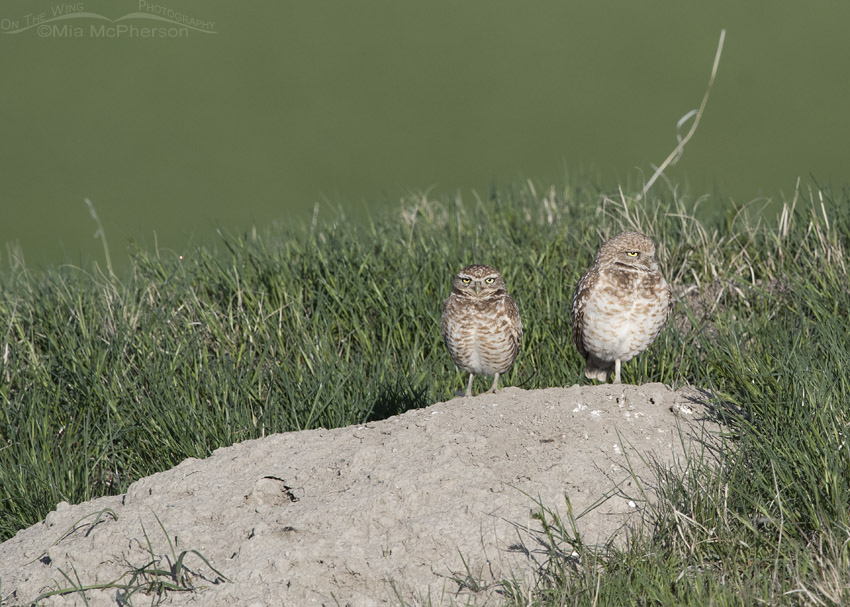 Burrowing Owls on a grassy hill – Nikon D500, f7.1, 1/1250, ISO 400, Nikkor 500mm VR with 1.4x TC, natural light, not baited
Burrowing Owls on a grassy hill – Nikon D500, f7.1, 1/1250, ISO 400, Nikkor 500mm VR with 1.4x TC, natural light, not baited
I’ve been watching a badger burrow that showed up on a hill last year when I am out looking for birds in northern Utah hoping to see a badger in top of the hill. Every time I have looked at it since last year I have been disappointed because there has never been a badger there and I am fond of badgers.
Last week I did spot something at that badger burrow on the grassy hill that I have been watching for so long and it was a mated pair of Burrowing Owls! I should have been expecting to see Burrowing Owls there because they quite often will select an old badger burrow or den as their nesting site, especially since we don’t have prairie dogs in that area.
I was also excited to capture SO much green in my images, this wet spring has really helped the spring grasses grow.
This burrow is quite a distance from the road but later on in the breeding season I expect I will be able to see and photograph a big brood of juvenile Burrowing Owls at the entrance of the burrow and it will be fun to watch them grow up, test their wings and take flight.
Even though I have been disappointed to not see a badger on this hill I am delighted that the Burrowing Owls are now calling it home. Thanks to a badger.
Life is good.
Mia
PS: The female Burrowing Owl is on the left and the male is on the right.
Burrowing Owl facts and information:
Athene cunicularia
- Burrowing Owls are small (robin sized), terrestrial owls that have long legs, short tails, will hunt day and night and nest in burrows in the ground.
- Nicknames for Burrowing Owls include desert owl, prairie dog owl, gopher owl, ground owl, howdy owl and I like to call them desert clowns because they can be so funny.
- Preferred habitats for Burrowing Owls include prairie dog towns, dry, open areas, deserts pastures, areas with short grass including golf courses, yards, vacant lots and airports.
- Western Burrowing Owls have seen significant declines in their populations, this might be caused by habitat destruction, fragmentation of habitat by urban development, pesticides, rodenticides, predation by nonnative species and destruction of burrows.
- Burrowing Owls are listed in Utah as a Wildlife Species of Concern. In some areas they are listed as threatened or endangered.
- Burrowing Owls prey on small mammals, insects including moths and beetles and they will also eat fruits and seeds.
- They lay 2 to 12 eggs which take 21 to 30 days to hatch, the female owl incubates.
- Most Western Burrowing Owls are migratory, Florida Burrowing Owls are nonmigratory.
- Burrowing Owls can live up to 9 years.


Woo hoo. And happy dances.
I like badgers too and love this image of the couple. I was surprised to learn that the male was larger than female, just the opposite of most birds of prey. I did a Google search and found some sites that said they were the same size, but most said the male was larger, as Mia wrote.
Great shots again, I just love the Burrowing Owls, it will be great when the young appear.
All the best, Gordon.
A very cute couple!
This is sooo beautiful!
Beautiful image Mia.
Is it my imagination or is the male Burrowing Owl much, much bigger than the female? Great photos as always.
As Mia pointed out in her P.S., the female is on the left and the male on the right.
This is an exception since in most birds of prey the female is larger than the male.